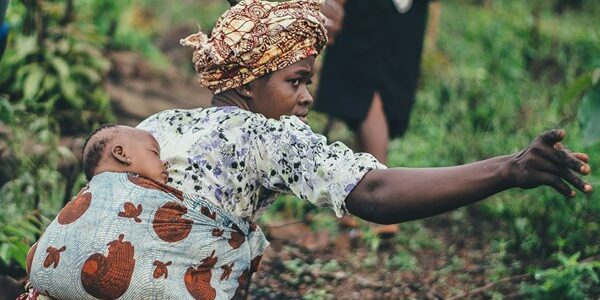The report provides insights into the health and nutritional status of children in Ghana based on findings from the 2008 Ghana Demographic and Health Survey (GDHS). It highlights progress made in child health over the years, key challenges, and disparities across regions.
While Ghana has made significant strides in improving child health and nutrition, challenges such as high stunting rates, micronutrient deficiencies, and limited access to treatment for common illnesses persist. Addressing these issues requires focused interventions targeting the most vulnerable populations and regions.
Key Nutritional Points
- Nutritional Status of Children
- Stunting (Chronic Malnutrition):
- 28% of children under five are stunted (too short for their age), reflecting long-term nutritional deficiencies.
- Stunting rates are highest in the Eastern Region (38%) and lowest in Greater Accra (14%).
- Children in rural areas (32%) are more likely to be stunted than those in urban areas (21%).
- Wasting (Acute Malnutrition):
- 9% of children are wasted (too thin for their height), indicating short-term nutrition deficiencies or illness.
- Underweight:
- 14% of children under five are underweight, showing both chronic and acute malnutrition.
- Infant and Young Child Feeding (IYCF) Practices
- Breastfeeding:
- Breastfeeding is nearly universal, with 98% of children ever breastfed.
- 63% of children under six months are exclusively breastfed (WHO recommends exclusive breastfeeding for the first six months).
- Average duration of exclusive breastfeeding is four months, below the recommended six months.
- Complementary Feeding:
- Only 41% of breastfed children and 11% of non-breastfed children aged 6–23 months meet WHO’s recommended IYCF practices, including diverse food intake.
- Micronutrient Intake and Anaemia
- Vitamin A:
- 81% of children aged 6–35 months consumed Vitamin A-rich foods (e.g., meat, fish, dark green leafy vegetables) within 24 hours of the survey.
- Only 56% of children aged 6–59 months received Vitamin A supplements in the six months prior to the survey.
- Iron Deficiency and Anaemia:
- 75% of children consumed iron-rich foods within 24 hours of the survey.
- 78% of children aged 6–59 months are anaemic, with:
- 23% mildly anaemic
- 48% moderately anaemic
- 7% severely anaemic
- Anaemia rates are higher in rural areas (84%) compared to urban areas (68%), and are most severe in the Upper East (89%) and Upper West (88%) regions.
Childhood Illnesses and Nutrition
- Diarrhoea:
- 20% of children under five had diarrhoea within two weeks of the survey.
- Only 41% of affected children were taken to a health facility, with rural areas seeing slightly higher treatment rates than urban areas (43% vs. 38%).
- Oral Rehydration Therapy (ORT) was provided to 50% of children with diarrhoea, but only 45% were treated with Oral Rehydration Salts (ORS).
- Acute Respiratory Infection (ARI):
- 6% of children exhibited symptoms of ARI in the two weeks prior, with more than half (51%) receiving medical attention.
- Malaria and Fever:
- 20% of children had a fever, with 43% receiving antimalarial drugs. However, only 24% received treatment on the same day symptoms began.
- 33% of households own an insecticide-treated net (ITN), but only 28% of children slept under one the night before the survey.
Childhood Mortality
- Ghana’s under-five mortality rate is 80 deaths per 1,000 live births, with infant mortality at 50 deaths per 1,000 live births.
- Neonatal mortality (deaths in the first month) accounts for 60% of infant deaths.
- Short birth intervals (less than two years between births) significantly increase the risk of childhood mortality, with shorter intervals doubling the likelihood of death.
Recommendations
- Enhance IYCF Practices:
- Promote exclusive breastfeeding for six months and improve complementary feeding practices through education and community programs.
- Address Micronutrient Deficiencies:
- Scale up Vitamin A supplementation and dietary diversification programs.
- Address anaemia through fortified foods and iron supplementation.
- Improve Treatment Access:
- Expand access to ORS and antibiotics for diarrhoea and ARI treatment.
- Ensure timely diagnosis and treatment of malaria.
- Scale Up ITN Use:
- Increase distribution and usage of insecticide-treated nets, especially in rural and high-malaria regions.
- Reduce Regional Disparities:
- Target high-malnutrition regions (Eastern, Northern, Upper East) with tailored interventions.
- Invest in Public Awareness:
- Enhance community awareness on nutrition, sanitation, and healthcare practices.



